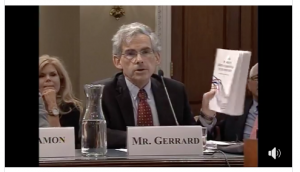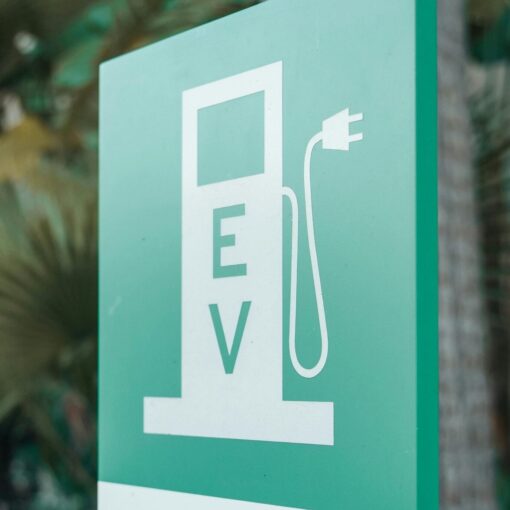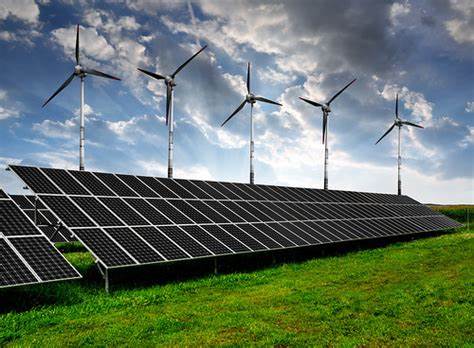The following is testimony submitted by Michael B. Gerrard, Faculty Director of the Sabin Center for Climate Change Law, before the Subcommittee on Energy and Mineral Resources, Committee on Natural Resources, United States House of Representatives, on April 30, 2019. A video of the hearing is available here.
Thank you, Chairman Lowenthal, Ranking Member Gosar, and distinguished members of the subcommittee. I am honored to appear before you today.
In 2014 several expert groups issued a report called Pathways to Deep Decarbonization in the United States.[1] It laid out how the U.S. energy system could be compatible with the two-degree temperature goal. One core element is a massive increase in utility-scale renewables, especially wind and solar. Earlier this month the Environmental Law Institute published a book, Legal Pathways to Deep Decarbonization in the United States, co-edited by Professor John Dernbach and myself.[2]It contains more than 1,000 specific recommendations for federal, state, local and private action to pursue these pathways. Several of them concerned renewables on public lands, and form the basis for my testimony today.
The costs of utility-scale wind and solar have been falling rapidly and, when both operating and capital costs are included, they are cheaper than coal or nuclear, and about the same as natural gas, even without subsidies.[3] According to the U.S. Department of Energy, the solar and wind industries together employed about 474,000 people in 2017, compared to 160,000 for coal, 362,000 for natural gas, and 515,000 for oil/petroleum.[4]
Given the vast amount of public land, there is tremendous opportunity to increase renewable energy generation and jobs on this land. The Bureau of Land Management is doing much better with solar than with wind, but there is still a long way to go.
My central point today is that undertaking the required reviews one project at a time is very cumbersome and time consuming. It is much better to look at broad geographic areas and conduct the necessary studies comprehensively. That will help identify the best specific places for renewable projects. Applications for specific projects can then be handled much more quickly, and approvals for construction can be granted with considerably less time and expense.
The Western Solar Plan is a good example of what can be done without new legislation. It involved a programmatic environmental impact statement for solar energy zones. By undertaking a review over a large area that included a detailed examination of species presence and habitat, it satisfied the requirements of both the National Environmental Policy Act and the Endangered Species Act. It has allowed individual projects within the study area to proceed quickly.
The BLM should identify more solar energy areas where this process could be utilized.
With respect to wind, BLM completed a programmatic EIS in 2005 for the western states, but it has not designated any wind energy zones or designated leasing areas for wind. This makes it very difficult to develop utility-scale wind, and in fact 99% of the installed wind energy capacity in the United States is on private lands.[5] BLM should undertake the environmental reviews needed to designate wind energy zones, and should resist the creation of too many exclusion zones that prevent renewable projects.
The Forest Service is far behind BLM. Except for one small wind project in Vermont that went online in 2017, there are no utility-scale wind or solar projects on Forest Service land.
Many projects have been stymied by lack of coordination among the multiple federal agencies involved. The FAST-41 Act,[6]enacted in 2015, provided a mechanism to better coordinate and expedite these efforts. It created a Federal Permitting Improvement Steering Council and a presidential appointee, the Executive Director, with considerable powers. It has not been used very much under either the Obama or Trump administrations, and it has not been given a sufficient budget to do the job. The One Federal Decision framework, set forth in an executive order issued by President Trump in 2017,[7]does show some promise if it is implemented vigorously, and if agencies are given adequate staffing and other resources, which has not happened yet.
The Public Lands Renewable Energy Development Act would resolve several of these problems.
It has been introduced in every Congress since 2011. The 2017 version, H.R. 825, would among other things require designation of priority wind areas within three years; require supplementation of old programmatic environmental impact statements for wind, solar and geothermal; require more interagency coordination; and allocate half of the revenues from leases, fees, and the like to the states and counties where the projects are located. All of these provisions would beneficially encourage renewables development on public lands. The Sustainable Energy Development Reform Act, H.R. 4426, introduced on November 16, 2017 would do all of that and considerably more aimed directly at climate change as well as oil and gas leasing.
The Migratory Bird Treaty Act has sometimes tripped up wind as well as fossil projects. The Trump Administration has changed the longstanding interpretation of this statute as imposing strict liability, and instead declared that there is no violation without intent to kill birds. Three pending lawsuits are challenging the legal validity of the new interpretation. The mitigation obligations have also not been relaxed. These and other problems leave applicants and their lenders with real uncertainty.[8]It would be better if the Fish and Wildlife Service used its existing statutory authority to establish a process to issue incidental take permits under the MBTA and also under the Bald and Golden Eagle Protection Act. Our book also contains many additional legal recommendations for reducing the hurdles that species protection laws pose to renewable energy development.[9]
There is considerable confusion over what mitigation requirements apply when projects have negative environmental impacts. Regional mitigation provides a way for companies to address mitigation responsibilities quickly and efficiently. It also helps resolve conflicts with environmental concerns. Establishing consistent and predictable compensatory mitigation requirements would reduce the legal uncertainty that overhangs many projects. Congressional authorization of policy here would be very beneficial.
To sum up, there is great potential for building renewable energy projects on public lands, generating both clean electricity and jobs. Existing laws allow this process to be sped up, and bills pending before this Subcommittee could speed it up even more.
[1]Williams, J.H., B. Haley, F. Kahrl, J. Moore, A.D. Jones, M.S. Torn, H. McJeon (2014). Pathways to deep decarbonization in the United States. The U.S. report of the Deep Decarbonization Pathways Project of the Sustainable Development Solutions Network and the Institute for Sustainable Development and International Relations. Revision with technical supplement, Nov 16, 2015. Available at https://deepdecarbonization.org/countries/#united-states.
[2]Michael B. Gerrard and John C. Dernbach, eds., Legal Pathways to Deep Decarbonization in the United States(Environmental Law Institute 2019), further information available from https://www.eli.org/legal-pathways-deep-decarbonization-united-states-summary-and-key-recommendations. The chapter most relevant to this hearing has been separately published. Michael B. Gerrard, Legal Pathways for a Massive Increase in Utility-Scale Renewable Generation Capacity, 47 Env. L. Rep. 10591 (2017), https://columbiaclimatelaw.com/files/2017/06/Legal-Pathways-for-a-Massive-Increase-in-Utility-Scale-Renewable-Generation-Capacity.pdf.
[3]Lazard, Levelized Cost of Energy Analysis – Version 12.0 (2018), https://www.lazard.com/media/450784/lazards-levelized-cost-of-energy-version-120-vfinal.pdf.
[4]U.S. Department of Energy, U.S. Energy and Employment Report (January 2017), p. 29, https://www.energy.gov/sites/prod/files/2017/01/f34/2017%20US%20Energy%20and%20Jobs%20Report_0.pdf.
[5]U.S. Wind Industry Annual Market Report for the Year Ending 2018. American Wind Energy Association. Page 78. Available at: https://www.awea.org/resources/publications-and-reports/market-reports.
[6]Fixing American’s Surface Transportation Act, Title 41, 42 U.S.C. § 4370m.
[7]Presidential Executive Order on Establishing Discipline and Accountability in the Environmental Review and Permitting Process for Infrastructure (August 15, 2017), https://www.whitehouse.gov/presidential-actions/presidential-executive-order-establishing-discipline-accountability-environmental-review-permitting-process-infrastructure/.
[8]SeeRyley Carlock & Applewhite, Bye, Bye Birdie: Summary and Analysis of the Trump Administration’s Recent Policy Change of the Migratory Bird Treaty Act (January 28, 2918), https://www.rcalaw.com/bye-bye-birdie-summary-and-analysis-of-the-trump-administrations-recent-policy-change-of-the-migratory-bird-treaty-act, and Summary and Analysis of the United States Fish and Wildlife Service’s “Guidance on the recent M-Opinion affecting the Migratory Bird Treaty Act” Memorandum (April 13, 2018), https://www.rcalaw.com/summary-and-analysis-of-the-united-states-fish-and-wildlife-services-guidance-on-the-recent-m-opinion-affecting-the-migratory-bird-treaty-act-memorandum
[9]Legal Pathways to Deep Decarbonization in the United States, supra note 2, pp. 482-487.




